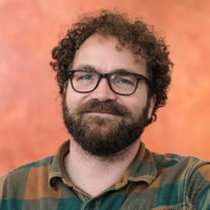Dutch technology scale up MX3D today unveiled the world’s first stainless steel 3D printed smart bridge in the city center of Amsterdam. With an honourable opening by Her Majesty Queen Máxima the bridge is now officially in use. The installation of the bridge is the culmination of several years of work of the team - that worked relentlessly on the research, design and realization of the bridge.
The futuristic bridge-design by Joris Laarman is 12.2 meters long, 6.3 meters wide and weighs 6,000 kilograms. MX3D made realised the design together with Arup as the chief engineering company, by turning welding robots - with the use of intelligent software - into industrial 3D printers.
“With this new technology, specific 3D printed urban infrastructure solutions can be developed, without wasting materials and with a design fully flexible in shape and style”
Gijs van der Velden, CEO MX3D

Layer by layer, they managed to create the organic shape of the bridge. With this new technology, specific urban infrastructure solutions can be developed, without wasting materials and flexible in shape and style.
The coming two years, Amsterdammers can make use of the futuristic bridge which is located at one of the oldest canals in Amsterdam's Red-light district at the Oudezijds Achterburgwal.
With the “BRIdging Data in the built Environment”- project, also known as the BRIDE project, AMS Institute, together with University of Twente, TU Delft, City of Amsterdam and MX3D, will also conduct research into the ethical consequences and regulation of smart infrastructures in the city.
Questions such as: 'what do we as citizens actually want measured' and 'to whom does the collected data belong' and 'do we actually want a city full of sensors', are central to this. As such, the bridge will become a true 'Living Lab'.
Better understanding Amsterdam's cityness
Amsterdam as an urban city can be described in terms of its urbanity or even “cityness". With the bridge being equipped with sensory technology, citizens can interact with the bridge. In turn, the smart bridge enables BRIDE's multidisciplinary research team - with backgrounds ranging from philosophy, industrial design and computer science - to better understand Amsterdam’s cityness.
Smart sensor network feeds ‘digital twin’
The bridge is equipped with a sophisticated sensor network, to enable real-time data collection, to represent those data flows in live models, and to create usable analytics on top of that data which feeds into a Digital Twin of the bridge.
The bridge’s sensors collect structural measurements such as strain, rotation, load, displacement, and vibration, and also measure environmental factors such as air quality and temperature. Together, this data is used to create a ‘digital twin,’ an accurate computer model that represents the physical bridge in real time. The digital twin will help engineers measure the bridge’s health and monitor how it changes over its lifespan. The sensor data will also be used to “teach” the bridge to understand what is happening on it, beginning with the ability to count how many people are crossing it and how quickly.
“Cities are meant for humans. It is important to find out how citizens and visitors (prefer to) interact with smart objects in public space. Together with researchers from TU Delft we will look into how people respond to the MX3D bridge.”
Smart bridge as a living laboratory
Together with academic and industry researchers, the City of Amsterdam will use the bridge’s data streams to explore the role of Internet of Things (IoT) systems in the built environment. The “Research through Design” (RoD) methodology allows for participatory data-informed design processes, which mediate the relationship between citizens and “their” bridge.
The RoD approach combines design with IoT technology for citizens to rapidly manufacture an artifact for an urban space. Thus, intelligence is collected on this intersection between people, place, activity and technology - not from the mere presence of cutting-edge technology. This way, the bridge serves as a living laboratory.
To illustrate, the bridge will enable the researchers to explore what frameworks and approaches are needed to understand the transformation of a city seen from a cultural, political and social perspective. How can we close a fundamental knowledge gap in urban research, design and engineering of smart technologies? And how can smart technologies help to design for cityness and ultimately citizen-led governance, i.e. the feeling of citizen to own the public space?
For instance: can we use such systems to anonymously analyse crowd behavior, to help better understand the impact of tourism in the Red Light District. The project also addresses questions about open data, data ethics, and citizen ownership of city analytics.
A Responsible Sensing Lab for our 'Smart City'
As governments worldwide strive to build smarter cities, the BRIDE project helps experts improve the design, operation and safety of future 3D printed structures and IoT systems under all conditions. Therefore, this project is also closely linked to our Responsible Sensing Lab (RSL). Launched together with the City of Amsterdam, this Lab allows us to explore how to integrate social values in the design of sensing systems in public space.
In essence, RSL is a testbed for conducting rigorous, transparent, and replicable research how our smart technologies placed in public space can be designed in a way that makes the digital city ‘responsible’.
Now, with the smart bridge placed in the heart of Amsterdam, we can further explore the social side of a digital world: what do citizens want from smarter infrastructures, do they even want it? What are the ethical boundaries data collection should adhere to? Should a city collaborate or even be in the lead? How can we design the data sharing equitably?
“Our recent research has pointed out that ‘official’ actors primarily see transparency as a mean to ensure adoption, while citizens see transparency as a starting point for voicing their concerns and influencing the purpose and use of smart technology. This leads us to conclude that we - as designers of these systems - need to aim to design these systems for engagement as well as pushback by society.”
Gerd Kortuem
Professor & AMS PI
Robotic technology allows for significant material reduction
MX3D kicked off this project in 2015 when it proposed printing a metal bridge with its innovative large-scale, robotic 3D printing technology. The bridge is brought to life between 2017-2018, when four robots 3D printed the structure using more than 6,000 kgs of stainless steel.
The proprietary MX3D printing technology uses off the shelf welding robots to build up metal objects layer by layer. The MX3D bridge design was created using generative design and topology optimization techniques. The combination of those technologies allow for a higher form of liberty and a promise of significant material reduction.
“This robotic technology allows larger optimized designs to be 3D printed in metal. This causes significant weight reduction and reduced impact for parts manufactured in the tooling, oil & gas and construction industries.”
Gijs van der Velden | CEO MX3D

Partners:
The MX3D project has been made possible through the close collaboration with partners Autodesk, Heijmans, Joris Laarman Lab and ArcelorMittal and the support of Lead Structural Engineer Arup, The Alan Turing Institute Data Centric Engineering Programme, Lloyds Register Foundation, Air Liquide, ABB Robotics and Lenovo.
The project's public partners are TU Delft, Imperial College London, University of Twente, AMS Institute, the Municipality of Amsterdam and AMS Institute. Furthermore, important contributions have been made by: Force Technologies, HBM, Oerlikon, Faro Technologies, STV, Oerlikon Welding, MousBV and Plymovent.
